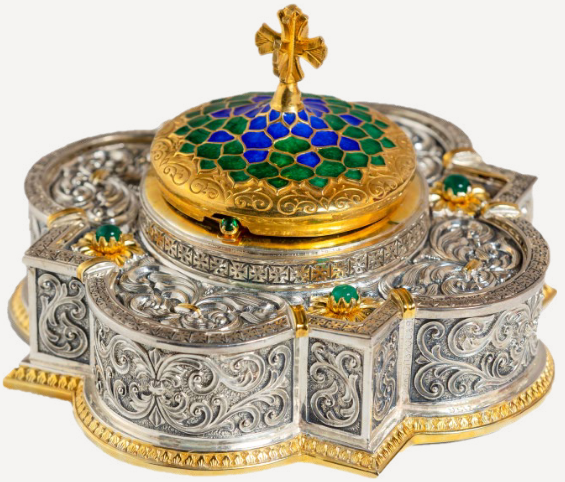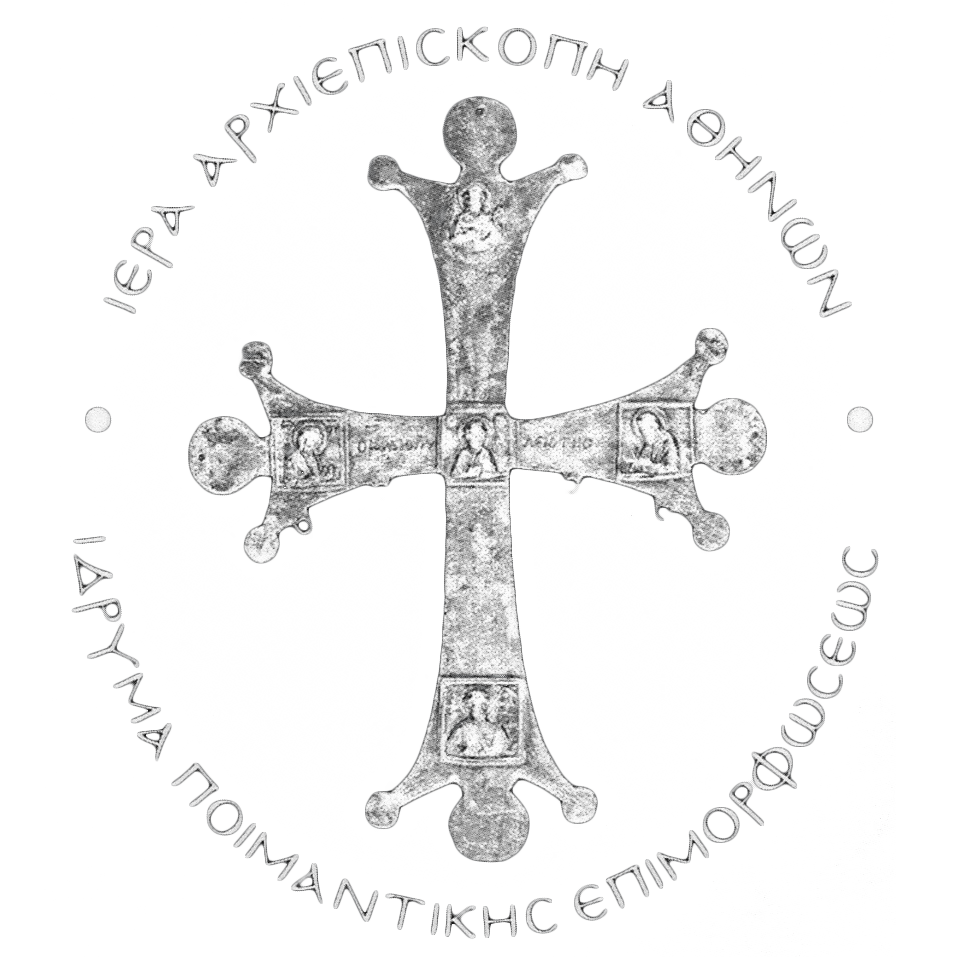A T H E N I A N A R M O S I S
SAINT CONJUNCTION
of Athens
I n our Church, the Orthodox Tradition mainly assigns the designation "saint" to those persons who reach deification, as the ultimate purpose of existence in Christ and constitute the martyrs in history. Every saint is a "witness" of the faith, not only as a bearer and transmitter of it simultaneously and through time in human society, but also as a confessor before kings and princes.
From the 2nd AD century the term "ἔθνοσαγιον" which was attributed to the first Israel, is also attributed to the new, the Christian people of God. At the same time, Hermas, for example, writes "Pray to God that your sins and all your household and all the saints may be burned." The nun Etheria from Spain in the 4th AD. century in her Itinerary she often uses the term "the holy bishop", "the holy men, i.e. clergy and monks, showed us every place". Saint Chrysostomos, referring to a pilgrimage to a certain monastery, writes "Sit again in the city of Aretium, the holy tents, I also say the naps." And Pope Hilarios, in the 5th century, addressed the faithful and wrote, "Episcopos Hilarios τῷαγιῳλῷτοῦTheοῦ".
It is characteristic of what Simeonones the Theologian writes about the saints: "The Holy Trinity, passing through all men, from the first to the last, from the head to the feet, unites them... The Saints in every generation, united with those who preceded and full of light like them, they become a golden chain, in which each Saint is a link that connects to the next with faith, charity and love. Thus, within the reality of God, they form a unique chain that cannot be easily broken."
According to the teaching of the Fathers, the uncreated grace of God sanctifies not only the souls, but also the bodies of the saints, even sacred objects, such as icons and tombs of holy persons. According to St. Nicodemus the Saint, the reason for the fragrance and miracle-working of the remains of the saints, "is the indwelling in their bodies by the Grace of the Holy Spirit, which is not separated from them after death, but remains with them. Since the souls of the Saints poets are in the heavens, their bodies prove to be a source of fragrance and miraculous miraculous cremations. Just as Grace is an animator, so he also animates the bodies of the Saints."
The life of Constantine the Great and his mother Saint Helen set the foundations and define the context in which we move today. The first Christian emperor was born on February 27, 272. Twenty-one years later in 293, Emperor Diocletian appointed Constantine's father, Constantius Chlorus, Caesar of the Western Provinces, Gaul, Spain, and Britain. But since Caesar's wife was not allowed to be of humble origin, like St. Helen, she necessarily had to get a divorce, which she did.
Diocletian, in order to ensure Constantine's obedience to his new office and that he would not rebel against him, at least kept Helen and Constantine as his hostages from 293 to 305 when he abdicated, retiring to Split in Dalmatia. All this time Constantine lived with him, and the emperor treated him in an excellent manner. Wherever he was, Constantine was with him, standing on his right, and everyone admired his stature, beauty, physical strength and generally his royal attitude. Diocletian, appreciating all these advantages, made him very early a first-class millenarian.
Thus Constantine was still in the palaces of Nicomedia, when Galerius succeeded in having the decrees issued against the Church. He was present at the relevant discussions and felt very disgusted by the decision as he had reason to be displeased with Galerius making such a proposal. As can be seen from the biography of the great Constantine, he was present at the testimonies of great saints of our Church, such as Saint George the trophy-bearer and Saint Panteleimon, events that shocked him deeply.
When he himself became Monocrator of the empire and founded the new capital, one of his first tasks was to collect in the new city the relics of holy martyrs, since Constantinople did not have the tradition of Rome, which was steeped in the blood of martyrs. This is how Constantine built, in addition to the church of the Holy Apostles and the Synagogue of the Saints, where he collected the relics of the martyrs.
In imitation, then, of that equal apostle king, the general of the Athenians, as he wanted to be called, the one who was a grain provider for Athens until his death, the one who supported the city of Athens beyond the stipulated additional forty thousand liters of wheat in the year in which the Athenians set up a gold-crowned statue, we collected all the cases that keep fragments of holy relics of our saints, from all the Parishes of the Archdiocese of Athens, without focusing on the artistic or financial value of the case because the true treasure lies within it and thus the possibility is provided to know all the ambassadors in heaven of the Athenian Church.




